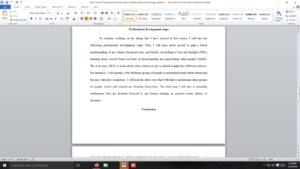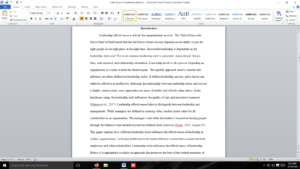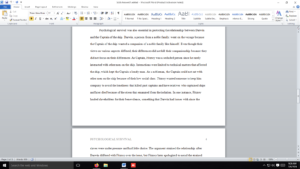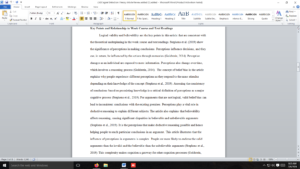Future Professional Development in Multicultural Psychology
Multiculturalism in the field of psychology continues to evolve as it has since the Civil Rights era. Your view of multiculturalism has likely changed over the course of time, especially over the last several weeks. What experiences, both online and in residence, have had the greatest impact on your professional and personal development thus far? Have the topics you explored in this course sparked a shift in the focus of your professional and personal intensions? Whether you make multicultural psychology your area of specialty or continue to develop multicultural competence, your experience in this course should reveal how these topics influence your practice and the communities in which you work.
Post by Day 4 a synthesis of your experience in this course. Then explain what aspects of this course, both online and in-residence, were the most valuable for you both personally and professionally. Be sure to include any insights gained from the Learning Resources and the Faculty Panels presented during the in-residence component of this course. Finally, explain what professional development steps you will take to continue building on what you learned and experienced online and during the in-residence component.
Be sure to support your post with specific references to the Learning Resources.
Readings
- Brown, S. D., & Lent, R. W. (Eds.). (2008). Handbook of counseling psychology (4th ed.). Hoboken, NJ: John Wiley & Sons, Inc.
- Chapter 8, “Theoretical and Empirical Advances in Multicultural Counseling and Psychology” (pp. 121–140)
- Franklin, A. J. (2009). Reflections on ethnic minority psychology: Learning from our past so the present informs our future. Cultural Diversity and Ethnic Minority Psychology, 15(4), 416–424.
Retrieved from the Walden Library databases. - Schwartz, S. J., Unger, J. B., Zamboanga, B, & Szapocznik, J. (2010). Rethinking the concept of acculturation: Implications for theory and research. American Psychologist, 65(4), 237–251.
Retrieved from the Walden Library databases. - Vasquez, M. J. T., Lott, B., García-Vázquez, E., Grant, S. K., Iwamasa, G. Y., Ludwin, M. E., Ragsdale, B. L., & Vestal-Dowdy, E. (2006). Personal reflections: Barriers and strategies in increasing diversity in psychology. American Psychologist, 61(2), 157–172.
Retrieved from the Walden Library databases. - Vera, E. M., & Speight, S. L. (2003). Multicultural competence, social justice, and counseling psychology: Expanding our roles. The Counseling Psychologist, 31(3), 253–272.
Retrieved from the Walden Library databases.
Optional Resources
- Eagly, A. H., & Chin, J. L. (2011). Diversity and leadership in a changing world. American Psychologist, 65(3), 216–224.
Retrieved from the Walden Library databases. - Glassgold, J. (2008). Bridging the divide: integrating lesbian identity and Orthodox Judaism. Women & Therapy, 31(1), 59–72.
Retrieved from the Walden Library database
Answer preview
To continue building on the things that I have learned in this course, I will take the following professional development steps. First, I will learn about myself to gain a better understanding of my values, historical roots, and beliefs. According to Vera and Speight (2003), learning about oneself forms the basis of understanding and appreciating other people’s beliefs. The next step will be to learn about other cultures to get a cultural insight into different cultures. For instance, I will interact with different groups of people to understand their beliefs better and become culturally competent. I will look for other ways that will help to understand other groups of people, which will expand my diversity know-how. The other step I will take is attending conferences that are diversity-focused to get formal training on practice issues related to diversity.
[764 Words]

Future Professional Development in Multicultural Psychology










